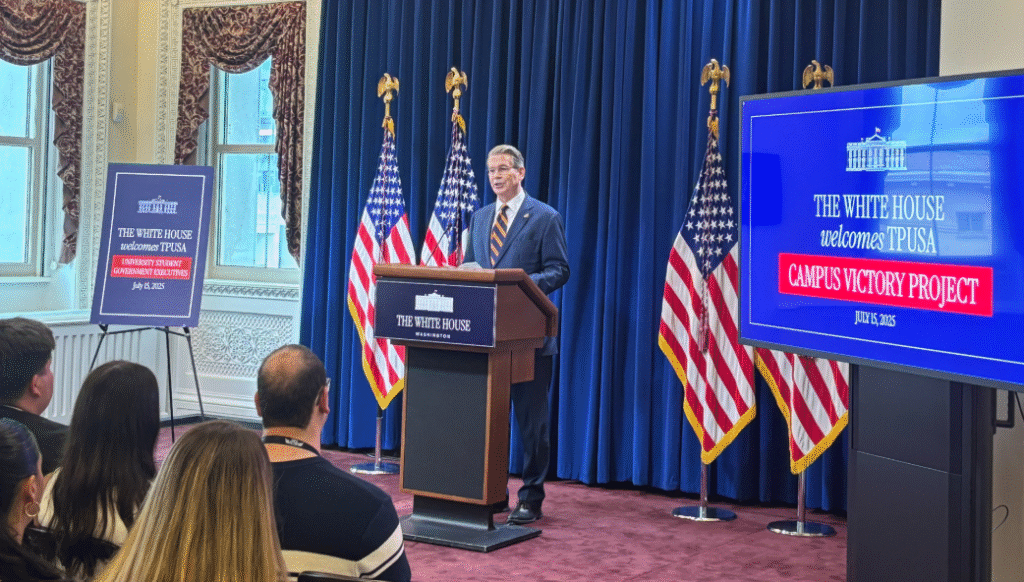In 2025, it’s not Donald Trump or Jerome Powell making the biggest impact on the U.S. economy — it’s Treasury Secretary Scott Bessent. By carefully managing the Treasury General Account (TGA), Bessent is controlling liquidity in the financial system, influencing interest rates, and preventing market stress without grabbing headlines. This blog breaks down how his strategic borrowing, bill issuance, and bond buybacks are quietly shaping the global economy — and why it matters more than ever in today’s fragile financial environment.
Not Trump, Not Powell — Scott Bessent Is Quietly Managing the U.S. Economy. Here’s How
One of the biggest yet most underappreciated forces driving the global economy right now isn’t just the U.S. Federal Reserve. It’s how Scott Bessent, the new U.S. Treasury Secretary, is managing the government’s cash balance. At the center of this financial tightrope act is the Treasury General Account, or TGA — the U.S. government’s main checking account held at the Federal Reserve.
This account receives cash inflows like tax payments and bond issuance proceeds, and it sends money out for federal spending — Social Security, military salaries, interest payments, and more. But what’s less understood is how movements in the TGA have a direct and immediate impact on the U.S. banking system and global liquidity.
Whenever money is spent from the TGA, it flows out of the Fed and into banks, increasing the banking system’s cash known as reserves. Conversely, when the Treasury raises money by selling bonds, cash flows into the TGA and out of banks, reducing those same reserves. This liquidity dynamic gives the Treasury hidden power over short-term interest rates and financial conditions.
When TGA balances fall, bank reserves rise, and financial conditions loosen. When TGA balances rise, reserves fall, and liquidity tightens — driving up short-term borrowing costs.
So what exactly are these bank reserves? They are the deposits that commercial banks hold at the Federal Reserve. Banks use these reserves to settle payments between themselves, lend money overnight, maintain liquidity buffers, and satisfy capital adequacy rules such as the Supplementary Leverage Ratio (SLR) and the Liquidity Coverage Ratio (LCR). Even though the Fed officially eliminated reserve requirements in 2020, banks still voluntarily hold reserves as a crucial safety and liquidity buffer.
When reserves are high, repo markets remain stable, Treasury auctions go smoothly, and financial markets are liquid. When reserves fall too low, the situation can quickly deteriorate: repo rates spike, lending slows, and stress ripples through funding markets.
Traditionally, the Treasury tries to keep the TGA between $500 to $600 billion. But in 2023, the debt ceiling crisis forced the government to stop borrowing temporarily and deplete its TGA to continue paying bills. By mid-2023, the account was nearly empty.
When the debt ceiling was lifted, the Treasury needed to raise $500–600 billion to refill the TGA. But that money would come directly from the banking system, draining reserves and tightening financial conditions — much like a 0.25% rate hike from the Fed, according to estimates by FTI Consulting. The critical difference? This wouldn’t be a move by the Fed. It would happen silently, through bond auctions, with no press conference or policy announcement.
In 2023, that massive liquidity drain didn’t rattle markets because the Fed’s Overnight Reverse Repo Facility (ON RRP) acted as a buffer. Money market funds had over $2 trillion parked there, so the Treasury’s cash grab hit the RRP instead of bank reserves.
But in 2025, that cushion is nearly gone. The RRP balance has shrunk to just about $140 billion due to ongoing Quantitative Tightening (QT), where the Fed allows bonds to mature and pulls money out of the system. With no buffer left, the next TGA refill threatens to pull cash directly from bank reserves — a move that could destabilize short-term markets.
Enter Scott Bessent. Sworn in as Treasury Secretary in January 2025, Scott Bessent took over at a time of extreme financial fragility. He inherited a near-empty TGA, a shrinking RRP facility, a waning appetite for U.S. debt, and a Federal Reserve still focused on tightening.
Instead of aggressively refilling the TGA, Scott Bessent has opted for a slower, more tactical approach — a strategy known as sequencing. It involves spacing out Treasury borrowing to minimize shocks to financial markets.
Scott Bessent approach has three key components:
- Issuing more short-term Treasury bills (T-bills) which mature in weeks or months. These are highly liquid and cause minimal disruption to interest rates.
- Keeping long-term bond auctions flat, meaning the Treasury isn’t increasing the supply of 10-, 20-, or 30-year bonds that could spook markets.
- Running buybacks of older bonds, reducing excess supply and supporting bond prices.
This approach is sometimes called stealth yield curve control. Without setting a formal ceiling on yields, the Treasury is quietly shaping the interest rate landscape by controlling the mix and timing of debt issuance.
The Federal Reserve is paying close attention. In the January 2025 FOMC minutes, the Fed indicated it might pause QT if Treasury borrowing started draining reserves too quickly. This has turned into a delicate coordination between fiscal and monetary policy.
The market has already shown signs of strain. In May 2025, a 20-year bond auction saw yields jump to 5.04%, and the bid-to-cover ratio hit a one-year low — a signal that investor demand was weak.
If Scott Bessent moves too fast in refilling the TGA, bank reserves could plunge, triggering stress in the repo market, volatility in the Secured Overnight Financing Rate (SOFR), and potentially failed Treasury auctions. That would force the Fed to step in with emergency liquidity injections.
But if Scott Bessent moves too slowly, markets may worry that the U.S. government is running low on cash — a fear that could trigger its own set of financial ripples.

What Scott Bessent is doing can be called fiscal liquidity engineering. It’s not just about how much debt the U.S. issues, but how and when it’s issued. The goal is to maintain financial stability and avoid disruptions in short-term markets without requiring direct Fed intervention.
The basic mechanics are clear:
- When Treasury issues bonds, money moves into the TGA and out of reserves — tightening liquidity.
- When Treasury spends from the TGA, money flows to banks and adds to reserves — loosening liquidity.
And reserves are the lifeblood of the financial system. They influence funding costs, affect Treasury auction outcomes, and serve as a barometer for market stress.
So far, Scott Bessent’s slow-walk strategy seems to be working. The TGA is being refilled gradually. Bank reserves have remained relatively stable. Markets are calm — for now.
But this balancing act won’t last forever. Eventually, the debt must be issued, and markets must absorb it. When that time comes, the speed and manner of issuance will be critical.
Scott Bessent isn’t just managing a bank account — he’s influencing interest rates, market liquidity, and global financial stability. And how he times the next moves might define whether markets remain steady or spiral into stress. Acc to Scott Bessent
Disclaimer:
The information provided in this blog is for educational and informational purposes only. It does not constitute financial, investment, or legal advice. Readers are advised to conduct their own research or consult with a qualified financial advisor before making any investment or financial decisions. The views expressed are based on publicly available data and news sources as of the time of writing.

